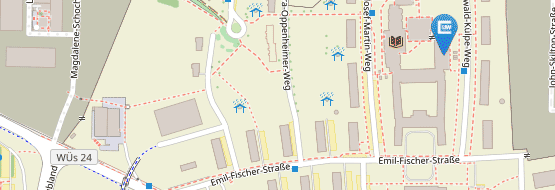Locations
In 1402, Pope Boniface IX granted the Würzburg Bishop Johann von Egloffstein the privilege to found a university. This foundation was the fourth in the territory of present-day Germany and is the oldest university foundation in Bavaria.
In 1582, the university was ceremoniously reopened by Prince-Bishop Julius Echter von Mespelbrunn. The "Julius" in today's name Julius Maximilian University (JMU) goes back to him. The addition of "Maximilian" came later, with the transfer of Würzburg to Bavaria. It refers to Elector Maximilian I Joseph, who rose to become the first Bavarian king in 1806.
Röntgen and other famous scientists
Julius Maximilian University can look back on a successful history. Famous scientists such as Rudolf Virchow, Carl Siebold and Franz Brentano taught and conducted research here.
Fourteen Nobel Prize winners - including the physicists Wilhelm Conrad Röntgen and Klaus von Klitzing as well as the chemist Hartmut Michel and the physician Harald zur Hausen - have worked in Würzburg to date.
Expansion beginning in the 1960s
After its almost complete destruction by a bombing raid on Würzburg in March 1945, the university recovered quickly. Reconstruction was followed from the 1960s by extensive expansion measures on the Hubland campus on the eastern outskirts of the city.
In 2011, the new Campus North was opened directly next to the Hubland site. JMU continues to develop there as well.






